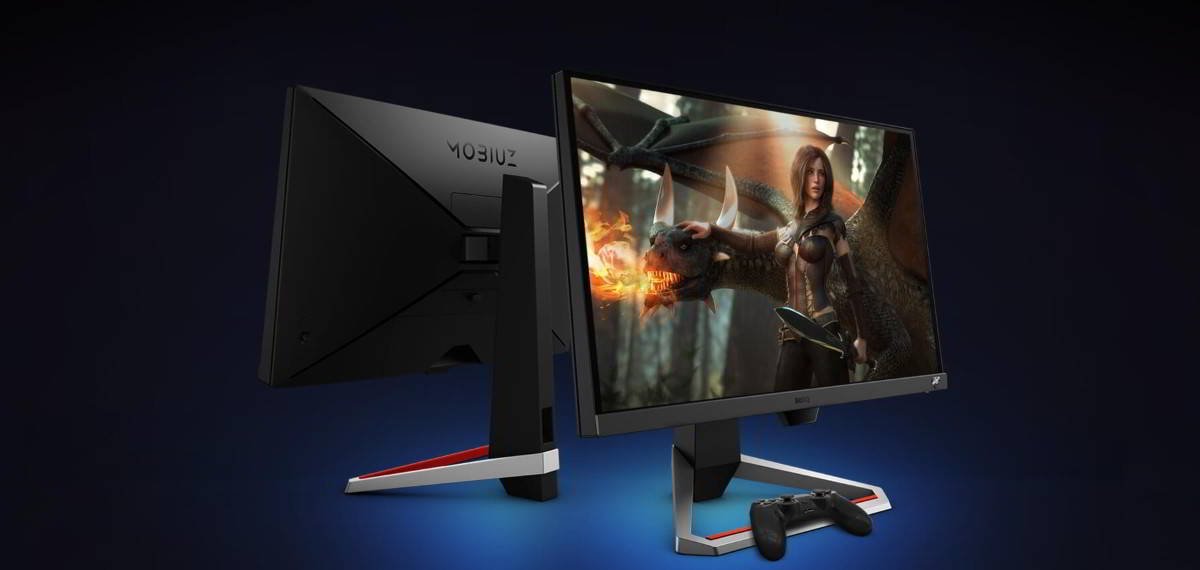

There’s a lot of life left in 1080p, with new monitors offering 144Hz, 1ms response, HDR, and premium IPS panels. This isn’t the old 1080p, it’s an upgrade version that’s perfect for high speed gaming.

That’s an extremely valid question, especially since we’ve recently told you 4K and HDR are the combination that’s at the heart of the new normal for monitors these days.
However, a few facts have not changed even if the paradigm has shifted towards higher resolutions. The absolute ruler of monitor pixel counts for over a decade from the mid 2000s to the late 2010s, full HD 1920 x 1080 still has gas in the tank. That comes in the form of speed, pixel density, and of course simple affordability considerations. We’ll quickly look at all of these and more as we prepare for a mini 1080p renaissance in the latter half of 2020.
Speaking of better technology and manufacturing, the “holy grail” of high refresh and fast response has finally been found, achieved, tested, and put to good use. Including on 1080p gaming monitors. The new ones we have in mind deliver 144Hz refresh with 1ms MPRT (moving picture response time or motion picture response time) and 2ms GtG (grey to grey, the more conventional way of measuring response time).
So you get lots of frames per second and near zero delay. The net result is almost non-existent input lag from the monitor side. Now, if you insist to play with a keyboard that has a 300ft cable, that’s not on us. We kid.
It’s no secret that even in 2020 (and likely for a couple more years), for pure speed, response, and competitiveness, 1080p monitors still offer better results than 2K or 4K models. If you’re not overly concerned with pixel count, 1080p in ultra settings with everything turned on, running in 144Hz and with almost no lag is the way to go for every game where reaction time is a big factor. That’s especially true for competitive multiplayer and esports. Needless to say, good 1080p monitors include FreeSync Premium to fully leverage their high speed and fast response.
Yes, before we forget, today’s 1080p isn’t the same as the full HD you may remember from 2012. Modern 1080p monitors have solid 400 nit/candela brightness, which means HDR. Indeed, HDR has become inseparable from 4K in most people’s minds, but truth is the two have little to do with one another. You could have HDR on a 480p TV, there’s nothing preventing that. As a premium feature that requires considerable technology, HDR proliferated on good 4K monitors to excellent results, but there’s nothing stopping it from appearing on 1080p screens.
Beyond high dynamic range, new 1080p monitors deploy IPS panels that produce superb colors and provide excellent viewing angles. Until not long ago, 1080p was essentially locked onto cheap TN panels, which are nice and fast, but don’t offer the best colors nor viewing angles. Advances in manufacturing and technology mean companies like BenQ have the ability to implement better components and materials in monitors of every level and budget segment, including premium 1080p gaming displays.
With 4K and beyond, you’re looking at big monitors due to the need to maintain the desirable 100-110 pixel per inch ratio. Basically, you need a 32”, and increasingly manufacturers are turning to bigger 43” panels. To be honest, not everyone wants what’s effectively a TV as their PC gaming monitor. And while a 27” 2K monitor can be wonderful, the same size works just as well for premium 1080p.
An excellent 25” or 27” 1080p monitor is just the right size for 1920 x 1080 pixels. You get crisp image quality without the blur and fuzziness some larger 4K monitors often display. For multi-use scenarios, 1080p monitors in this size class still work better. You get excellent clarity and picture balance whether gaming, browsing the internet, writing, reading, or posting images. Every pixel counts.
Multiplayer online battle arenas occupy a special niche among gamers. Devoted audiences invest thousands of hours into the leading MOBA titles, which all focus on high speed action, team work, and character development, aka loot. Not a single MOBA prioritizes graphics, and among their users 1080p remains the predominant resolution of choice. That means having an upgraded 1080p monitor with 144Hz, 1ms, and smart HDR would definitely serve to elevate your MOBA experience.
Even if you enjoy big, flashy AAA titles on a 60Hz 4K screen, your MOBA (as well as purely competitive FPS) needs are better served by a top-notch 1080p monitor that has more than twice the framerate and half the response time.
So, is 1080p staging a comeback? We don’t think it ever went away. Maybe it will eventually but not just yet. For pure reaction speed and close-to-the-metal clarity, 1080p still holds an advantage over higher resolutions.